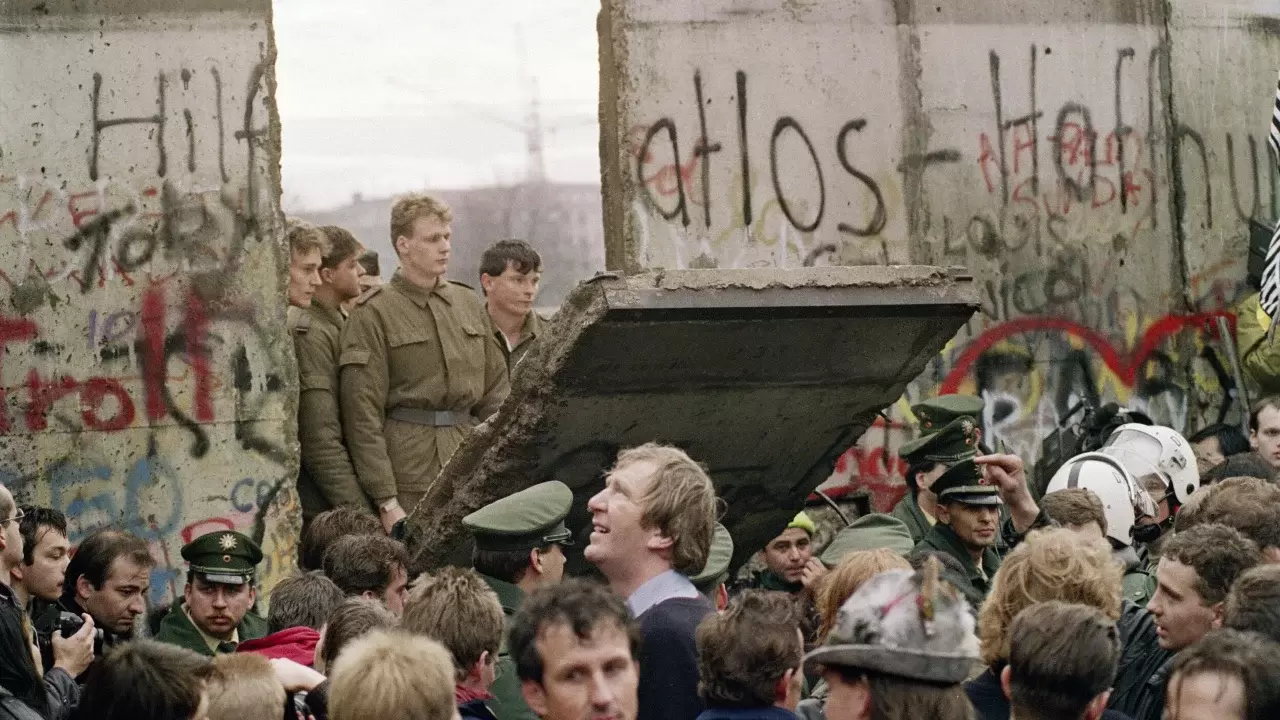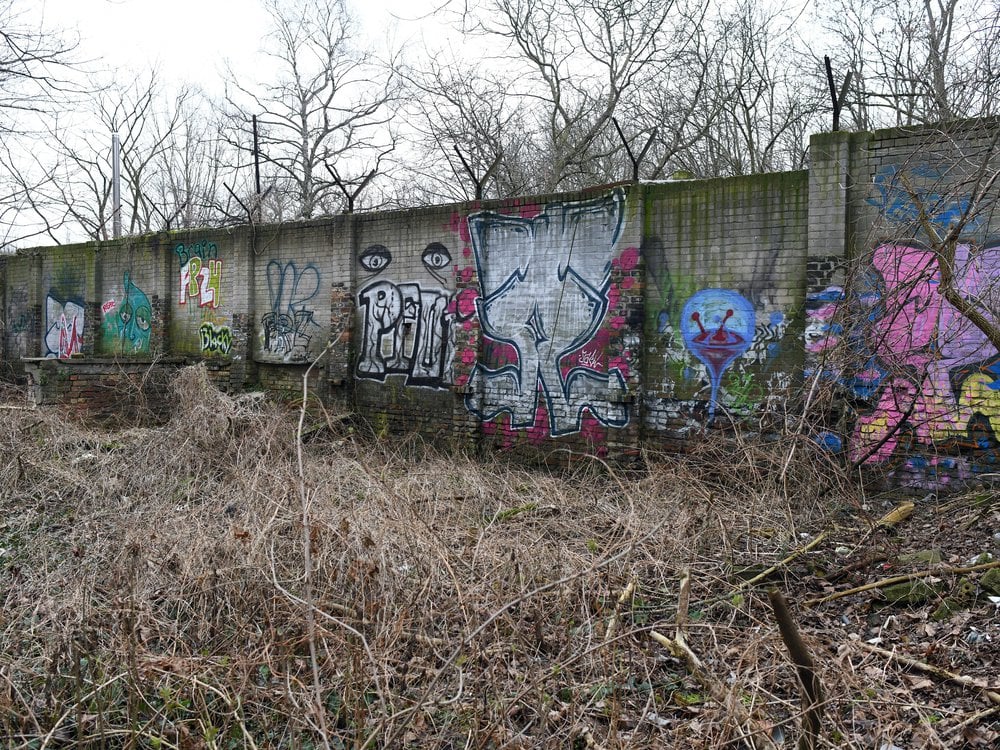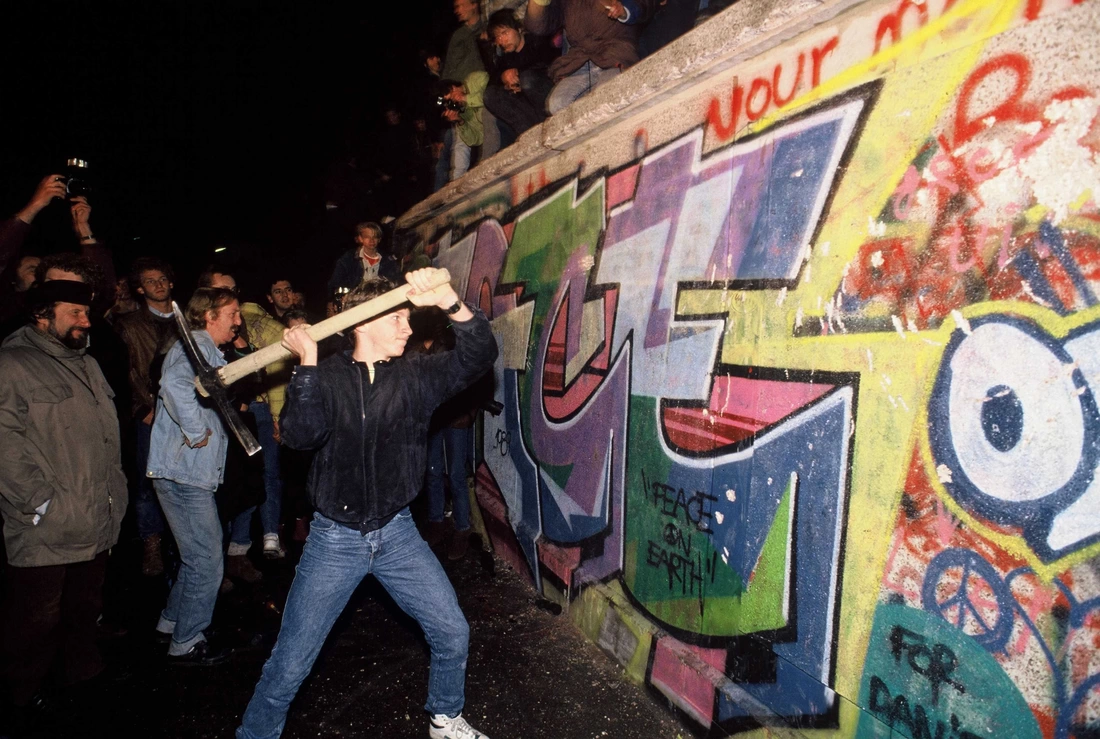|
The Berlin Wall. What goes up might come down ... The fall of the Berlin Wall in 1989 was a momentous event that marked the end of the Cold War and the beginning of a new era in European history. The Wall had stood for almost 30 years, separating East and West Berlin and symbolizing the division between the Soviet Union and the Western powers. But in November 1989, the Wall suddenly came down, as crowds of people on both sides of the divide demanded change. What were the main reasons for this historic event? Here are five factors that historians point to. 1. Gorbachev's Reforms Gorbachev's reforms One of the key factors that led to the fall of the Berlin Wall was the political and economic reforms implemented by Soviet leader Mikhail Gorbachev. Gorbachev's policies of glasnost (openness) and perestroika (restructuring) brought new levels of transparency and freedom to the Soviet Union and its Eastern European satellites. As historian Mary Elise Sarotte writes in her book "The Collapse: The Accidental Opening of the Berlin Wall," Gorbachev's reforms "had the unintended consequence of increasing the pressure on East Germany to change." Gorbachev himself recognized the role his policies played in the fall of the Wall. In a speech to the Soviet Politburo in November 1989, he said: "The world will not be the same after today. We are witnessing the beginning of a new era. The process of democratization of our society has been given an irreversible momentum." 2. Economic Crisis Economic crisis in East Germany Another important factor that contributed to the fall of the Berlin Wall was the economic crisis in East Germany. Despite being a socialist state, East Germany struggled to provide for its citizens and keep up with the more prosperous West. As historian Jeffrey Engel explains, "the East German economy was simply not working." This led to widespread dissatisfaction among East Germans, many of whom were eager for change. Historian Mary Elise Sarotte states that "by the mid-1980s, the East German economy was in shambles," with factories and farms producing shoddy goods and food shortages becoming more common. This economic crisis fueled discontent among East Germans and contributed to a growing sense that the Communist government was unable to provide for its people. 3. Popular Protest Popular protests in East Germany The fall of the Berlin Wall was also the result of popular protests and demonstrations that had been building for years. These protests began in earnest in the fall of 1989, as East Germans took to the streets to demand greater freedom and democracy. The protests were often peaceful, with participants holding candles and singing songs of unity and hope. Historian Jeffrey Engel argues that "the protests began with a few people gathering in Leipzig and grew to include tens of thousands in cities across East Germany." The protests were catalysed by a sense of frustration with the Communist government and a widespread desire for change. "East Germans wanted their voices to be heard, and they wanted a say in their own future", Engel concludes. 4. International Pressure The fall of the Berlin Wall was not just the result of internal factors in East Germany and the Soviet Union. It was also the result of international pressure from the West, particularly the United States. As historian Mary Elise Sarotte outlines, "the United States was instrumental in pushing the Soviet Union to allow for greater freedom in Eastern Europe." This pressure took many forms, including economic sanctions and diplomatic pressure. The United States and its allies also provided support for pro-democracy movements in Eastern Europe, helping to build networks of activists and providing funding for independent media outlets. 5. The actions of East German Leaders Finally, the fall of the Berlin Wall was the result of the actions of East German leaders themselves. In the weeks leading up to the fall of the Wall, the Communist government was deeply divided on how to respond to the growing protests and calls for change. Some leaders favored a crackdown, while others recognized the need for reform. Ultimately, it was the actions of reformist leaders like Egon Krenz that paved the way for the fall of the Wall. Historian Mary Elise Sarotte suggests that "Krenz realized that he had to make some concessions to the protesters in order to maintain the Communist government's legitimacy." Krenz and other reformist leaders allowed for greater freedom of expression and assembly, and even held talks with opposition groups. These actions helped to defuse the tensions that had been building in East Germany and paved the way for the fall of the Wall. Sarotte further argues that "by the time the Wall came down, East Germany had already undergone significant changes. The Communist government had made concessions to the protesters and allowed for greater freedom and democracy." In Conclusion ...
In conclusion, the fall of the Berlin Wall in 1989 was the result of a complex set of factors, including Gorbachev's reforms, economic crisis in East Germany, popular protests, international pressure, and the actions of East German leaders. Historian Jeffrey Engel concludes, "the fall of the Wall was not an inevitable event, but the result of a confluence of circumstances and decisions made by many different people." The fall of the Berlin Wall marked the end of an era in European history and the beginning of a new era of freedom and democracy. It was a momentous event that demonstrated the power of ordinary people to bring about change, and it continues to inspire people around the world to this day. --- Article submitted by Versus History Blogger Martha Fitzpatrick of Delaware, USA.
1 Comment
Hotdog
11/5/2023 10:38:08
Hotdog
Reply
Leave a Reply. |
Categories
All
Archives
April 2024
|



 RSS Feed
RSS Feed